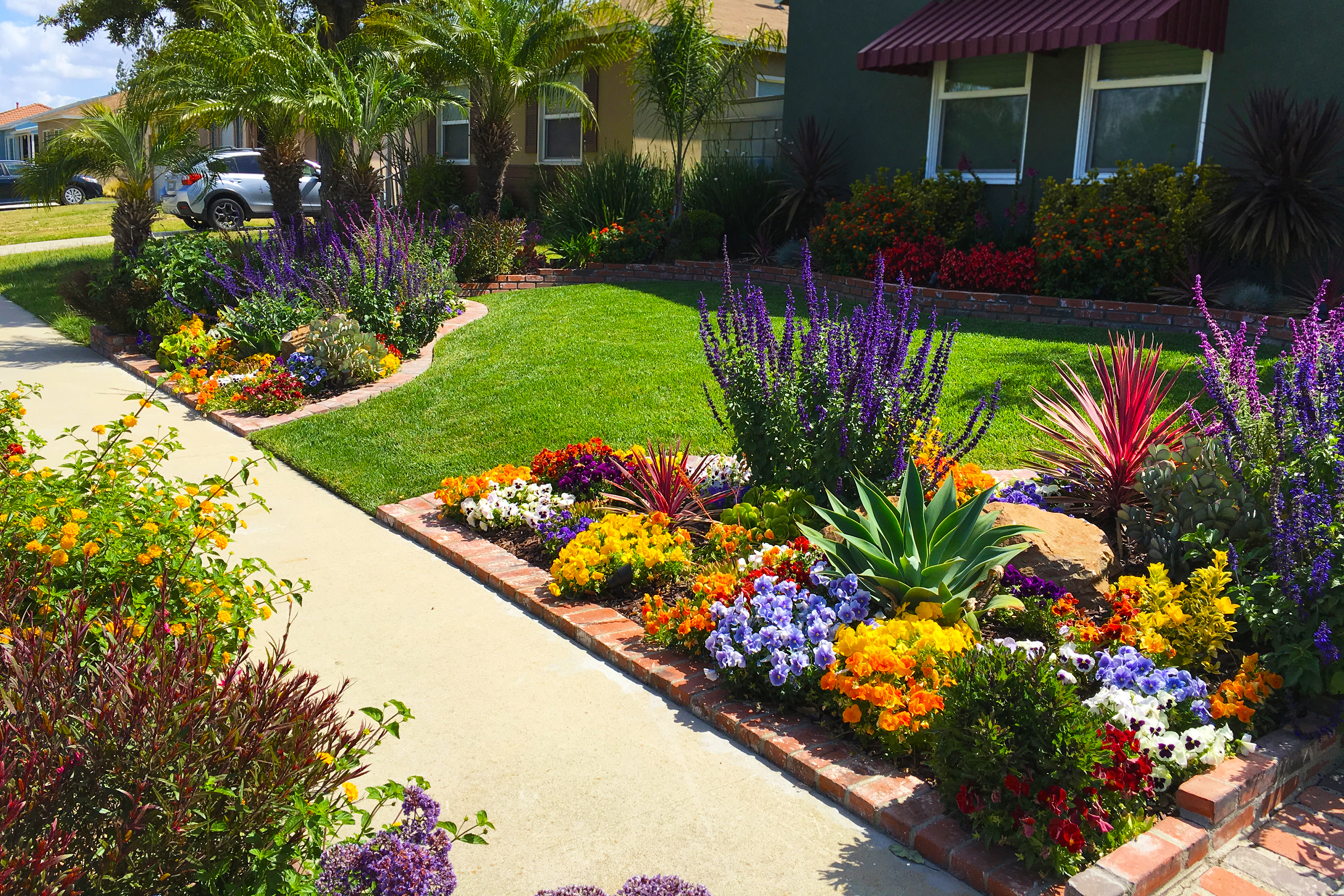Update Your Property with Custom-made Palm Desert Landscaping Solutions
Update Your Property with Custom-made Palm Desert Landscaping Solutions
Blog Article
A Comprehensive Guide to Designing and Implementing Effective Landscaping Solutions
The art and scientific research of landscape design extend past mere looks; they involve a thoughtful combination of layout principles, environmental stewardship, and practical application. What methods can one employ to guarantee these landscapes not only thrive but additionally flourish in consistency with their environments?

Understanding Landscape Style Principles
One could wonder what foundational elements add to effective landscape design. At its core, effective landscape style depends upon several key concepts that direct the arrangement and selection of elements within a room. These principles include unity, proportion, balance, and rhythm, each serving to develop a harmonious outdoor setting.
Unity refers to the cohesive partnership among different elements, guaranteeing that they interact aesthetically and functionally. Equilibrium can be achieved via balanced or unbalanced setups, allowing the landscape to really feel stable and inviting. Percentage entails recognizing the scale of aspects in connection with each various other and the surrounding setting, promoting aesthetic harmony and comfort.

Evaluating Your Outdoor Space
Prior to implementing the principles of landscape layout, an extensive evaluation of your exterior area is important. This first assessment helps define the extent of your landscaping job and makes sure that your design straightens with the special qualities of your property. Begin by examining the dimensions of your room, taking precise measurements to comprehend the available area for various elements such as gardens, patio areas, and pathways.
Next, observe the existing attributes of your landscape, consisting of topography, dirt top quality, and water drainage patterns. These variables substantially affect plant selection and placement. Furthermore, assess the sunlight direct exposure across various locations throughout the day, as this will certainly influence the kinds of plants that grow in your garden.
Consider the microclimates produced by structures, trees, and various other obstacles, as they can affect temperature and wetness levels. Last but not least, make note of any kind of existing plants or hardscape components that you want to preserve or remove. This extensive examination lays the foundation for a educated and reliable landscape design service, ensuring that your style is not only aesthetically pleasing but additionally useful and lasting for many years to find.
Sustainable Landscaping Strategies
These methods not only advertise eco-friendly equilibrium yet likewise boost the visual and useful value of a landscape. Implementing efficient irrigation systems, such as drip watering, decreases water waste and guarantees that plants obtain appropriate dampness (Palm Desert Landscaping).

Another reliable strategy is the strategic placement of hedges and trees to offer natural helpful hints windbreaks and color, thus decreasing power costs (Palm Desert Landscaping). Rainfall gardens can be integrated into the landscape layout to manage stormwater drainage successfully, filtering system contaminants before they get in waterways
Selecting the Right Plant Kingdoms
Choosing the right plants for your landscape is essential to accomplishing both aesthetic allure and eco-friendly harmony. The procedure begins with an understanding of your regional environment, soil conditions, and the particular microenvironments within your landscape. Examining variables such as sunlight direct exposure, moisture degrees, and existing plants will aid you pick plants that grow in your one-of-a-kind setting.
Take into consideration incorporating native plants, as they are well-adapted to local problems, call for less maintenance, and assistance local wild animals. In addition, selecting a diverse selection of types can improve biodiversity while minimizing the danger of disease and pest break outs. It is vital to evaluate the development routines, growing durations, and seasonal shades of possible plants to produce a cohesive and vibrant landscape.
Moreover, consider the intended usage of the space; for example, if the location will experience high foot website traffic, go with resilient ground covers. By attentively choosing plants that line up with both your aesthetic goals and ecological requirements, you can create a lasting landscape that not only boosts your home however also contributes positively to the bordering browse around here community.

Execution and Maintenance Methods
When the appropriate plants have actually been chosen for your landscape, the focus changes to reliable execution and ongoing maintenance strategies. Effective installation starts with proper website preparation, that includes dirt testing to determine nutrient degrees and pH, complied with by changing the soil as required. Meticulously set up plants according to their growth practices and light needs, guaranteeing ample spacing to promote healthy and balanced development.
Irrigation is a critical element of execution. Develop a watering timetable that considers the particular demands of each plant species, changing for seasonal modifications. Utilizing drip irrigation systems can enhance water efficiency and reduce drainage.
Upkeep strategies have to be applied to make sure the longevity and vitality of your landscape. Routine tasks include weeding, mulching, and trimming to regulate development and stop illness. Fertilizing needs to be performed based on dirt tests, offering the essential nutrients without over-fertilizing.
Checking for bugs and conditions is important; early detection can avoid considerable damage. Last but not least, seasonal adjustments to upkeep regimens, such as winterizing perennials and preparing for spring growth, will make certain that your landscape remains visually appealing and healthy and balanced year-round.
Conclusion
Effective application and continuous upkeep further make sure the long life and vigor of landscapes. By incorporating these elements, landscapes can be changed right into stunning, useful environments that promote biodiversity and contribute favorably to neighborhood health.
One might wonder what fundamental elements add to effective landscape layout. At its core, effective landscape layout pivots on several crucial principles that assist the plan and option of aspects within a room.Choosing the right plants for your landscape is vital to attaining both aesthetic allure and eco-friendly harmony. It is necessary to evaluate the development informative post behaviors, growing durations, and seasonal colors of prospective plants to develop a cohesive and vibrant landscape.
When the right plants have been selected for your landscape, the focus shifts to reliable implementation and ongoing upkeep strategies.
Report this page